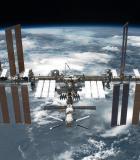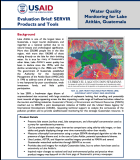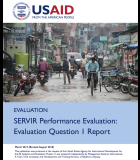SERVIR
The SERVIR project is helping people in more than 45 countries access and use satellite imagery and climate and weather information to make better decisions about development. A collaboration between USAID and NASA, SERVIR has established hubs in West Africa, Eastern and Southern Africa, Hindu Kush-Himalaya, and Lower Mekong regions by partnering with regional technical institutions. SERVIR is helping to integrate science into useful products and tools that support better decisions about livelihoods, disasters, and economic development.
SERVIR is a collaboration between NASA and USAID that has been quietly but steadily building the capacity of scientific organizations, government officials, emergency responders, and communities across the developing world to better handle environmental challenges and more effectively pursue resilient development. SERVIR — which means “to serve” in several languages — seeks to deliver near-real-time environmental data from Earth-orbiting satellites to data-scarce communities and scientists, and translate that data into tools, products, and services that can inform local decision-making on everything from land use and food production to water management and disaster risk reduction.
SERVIR’s overarching goal of transferring knowledge from U.S. scientists and development experts to their counterparts abroad equips partners with the skills and information needed to handle environmental challenges as they arise, while empowering local scientists and policymakers — and the communities they serve — to become more self-reliant.
Related
Harnessing the Power of Interagency Cooperation to Advance Disaster Preparedness (FY 2017 Project Profile)
Activity Description
SERVIR works hand-in-hand with institutional partners via four regional hubs: SERVIR-West Africa, SERVIR-Eastern and Southern Africa, SERVIR-Hindu Kush Himalaya, and SERVIR-Mekong. With that geographic reach, SERVIR has helped streamline access to scientific data in 45 countries since the program’s launch. The number of beneficiary countries is poised to grow in the coming years as demand surges for satellite-based Earth observation data that can inform decision-making, and the new SERVIR Amazonia hub arrives in South America in 2019.
Through each regional hub, SERVIR engages a primary institutional partner that helps connect NASA and USAID officials with their local counterparts. These institutional partners, such as the Asian Disaster Preparedness Center in the Mekong basin, not only offer connections to national governments and development agencies, but also facilitate knowledge transfer and accelerate capacity building by helping connect local scientists, development officials, policymakers, and emergency response officials.





